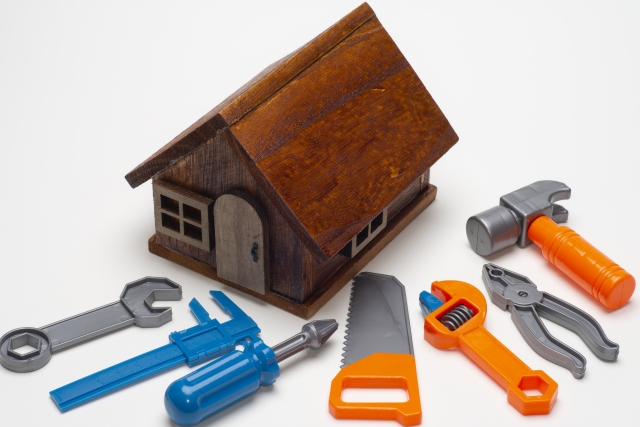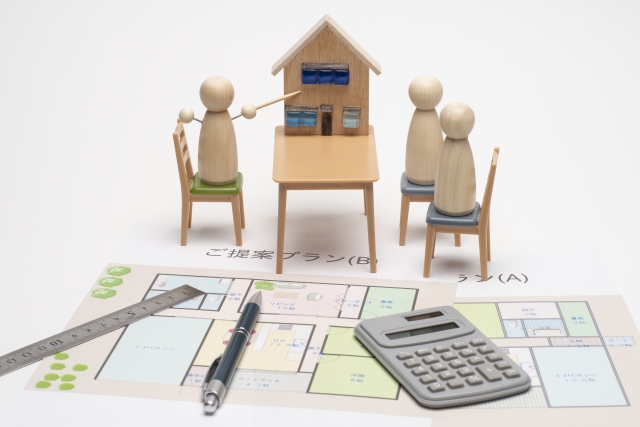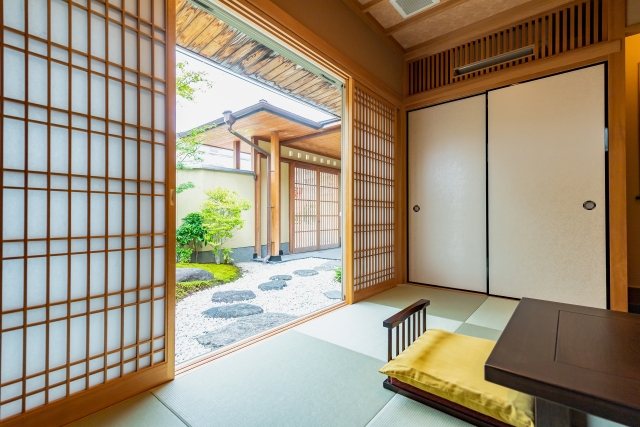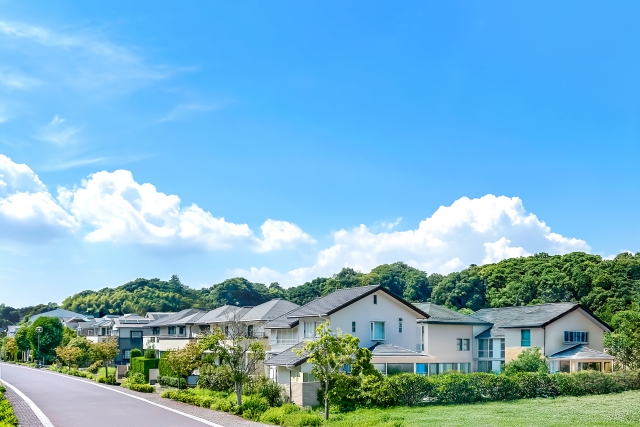Enhancing the Asset Value of Secondhand Properties! How to Proceed with Renovation/Remodeling in Japan
2025-06-27
Real Estate Investment in Japan

When investing in real estate in Japan, one option is to purchase a secondhand property and carry out renovations or remodeling after the purchase.
Naturally, secondhand properties can be purchased at a lower price than newly built properties, so even after renovations or remodeling, the total cost may still be lower than purchasing a new property. Additionally, renovating or remodeling a secondhand property can increase its asset value and is expected to boost demand.
However, since there are differences in perspectives between Japan and overseas regarding renovation and remodeling, it is important to understand the Japanese way of thinking if you plan to renovate or remodel real estate in Japan. Moreover, if the renovation or remodeling costs become too high and the total cost ends up being the same as that of a newly built property, the advantage of purchasing a secondhand property at a low price may be lost.
This article provides a clear explanation of the basics of renovation and remodeling, the differences in perspectives between Japan and overseas, and the process of renovating in Japan.
If you are considering investing in real estate in Japan, please use this as a reference.
What is the difference between renovation and remodeling?
Renovation and remodeling are terms used when refurbishing aging buildings, but the meanings of the two differ.
First, let’s understand the difference between renovation and remodeling.
What is remodeling?
Remodeling refers to improvement or repair from a deteriorated state and generally means restoring the property to its original, newly built condition.
Specifically, it refers to work that returns deteriorated, damaged, broken, or soiled areas to a clean, newly built state—for example, replacing wallpaper, repainting exterior walls, or replacing kitchen equipment.
Although remodeling typically involves partial and small-scale work, even large-scale projects such as overall building repairs may also be classified as remodeling.
What is renovation?
Renovation means renewal, innovation, or restoration and refers to upgrades that increase the value of the building.
The purpose is to improve the quality and functionality of the building beyond its original, newly built state. Examples include changing the layout or interior/exterior design, or relocating the kitchen by altering the plumbing, which are all large-scale projects.
Differences between remodeling and renovation
Remodeling refers to bringing a negative condition back to zero, while renovation turns a negative condition into a positive one. For example, replacing old wallpaper or broken plumbing to restore the property to the same condition as when it was new is remodeling.
On the other hand, removing partition walls to modernize the layout or improving seismic resistance by reinforcing walls to exceed the original functionality is considered renovation.
Remodeling is generally smaller in scale, can be completed in a short period, and is less costly than renovation. In contrast, renovation tends to involve larger-scale work and higher costs. However, renovations allow for large-scale upgrades with flexible designs tailored to specific needs, which often leads to increased asset value of the property.
Choose between remodeling and renovation based on the condition of the property and your renovation goals.

Differences in perspectives on renovation and remodeling between Japan and overseas
Due to cultural and value-based differences, the perspectives on renovation and remodeling vary between Japan and other countries.
Understanding these differing perspectives is also important when conducting renovation or remodeling in Japan.
Overseas perspective
Overseas, renovation and remodeling are generally conducted with the goal of selling the property at a higher price. Therefore, in real estate transactions overseas, it is typically the seller who carries out the renovation or remodeling.
In particular, in the United States, there is a perception that houses are assets and investment products. Because people frequently move, houses are usually kept in good condition to ensure a higher resale value. Furthermore, in contrast to Japan, even older properties that are well maintained tend to be highly valued overseas.
There is a culture of maintaining and passing down old homes, and it is common for individuals to perform DIY renovations or remodeling.
Japanese perspective
In Japan, people renovate or remodel to create a more comfortable living environment for themselves. Therefore, it is usually the buyer who communicates their preferences to the contractor and commissions the renovation or remodeling.
Japan still strongly favors newly built homes, and property values tend to drop as buildings age. Even if renovations or remodeling are carried out, it is rare for the resale price to exceed the purchase price, especially as the property continues to age.
In real estate transactions, both supply and demand tend to be higher for cheaper, unrenovated properties compared to renovated ones. When purchasing a property, it is often the case that it has not been renovated, so be aware that you may incur repair costs after purchase.
However, if the property is intended for rental use, it is more effective to renovate or remodel and maintain it in good condition. Since appearance and functionality are often important to tenants, renovating or remodeling can make it easier to increase rental income.

The process of renovating or remodeling secondhand properties in Japan
In Japan, renovations or remodeling are typically commissioned through professional contractors.
Let’s take a look at the process of renovating or remodeling a secondhand property in Japan.
The general flow is as follows:
- ・Decide on a budget
- ・Obtain an estimate
- ・Sign a contract with the contractor
- ・Begin construction
- ・Receive the handover
Decide on a budget
First, decide on a budget for the renovation or remodeling.
The cost of remodeling varies greatly depending on the scale and content. Partial work can be done for tens of thousands of yen, but large-scale projects may exceed one million yen. Renovations, being generally large-scale, typically cost several million yen, and full renovations can exceed ten million yen.
By clarifying your budget in advance based on your investment plan, you can maintain a stable financial plan.
A clear budget also makes it easier for contractors to propose plans that match your financial limits during consultations.
Obtain an estimate
Communicate your desired renovation or remodeling plan and budget to contractors and request estimates. Costs vary greatly between contractors, so it’s advisable to get quotes from several and compare them.
When comparing, don’t just consider price—also evaluate the contractor’s quality and track record before making your decision. When requesting a quote, it is generally necessary to conduct a site inspection while communicating your requirements.
Having layout plans or examples of your desired renovations can help the process go smoothly.
Sign a contract with the contractor
Once a contractor is selected, sign a contract.
Before signing, be sure to thoroughly review the following points in the contract:
- ・Whether the content matches your requests
- ・Payment schedule and method
- ・Guarantees in case of problems
- ・Availability of post-construction maintenance or follow-up service
Signing a contract without carefully checking can lead to disputes, so it’s essential to address any questions before finalizing.
Begin construction
After the contract is signed, construction begins.
The construction period varies depending on the content—small remodeling jobs may take only a few days. However, large-scale remodeling or renovation may take between 1 and 3.5 months. Be sure to confirm the construction period in advance.
For full apartment renovations, construction typically takes 1 to 3 months, and including consultations, it may take 3 to 6 months. This varies depending on apartment structure and construction area.
For full renovations of detached houses, construction generally takes 1 to 4 months, and including consultations, 3 to 7 months. Since detached homes also include exterior walls and roofs, the construction period is longer than for apartments. Outdoor work is also affected by weather conditions.
In some cases, structural reinforcement may be needed depending on the condition of the building’s framework or foundation, which could further extend the timeline.
Receive the handover
Once construction is complete, inspect the results and receive the handover. At this time, carefully check for discrepancies with the contract and look for any damage.
Under Japanese law, there is a liability for contract nonconformity. If the actual condition differs from what is stated in the contract, the buyer may hold the seller accountable. If discrepancies exist, the buyer may demand a price reduction, additional work, or cancellation of the contract.
Generally, the liability for nonconformity applies within one year of the buyer discovering the issue, but most real estate contracts in Japan include a special clause applying a two-year period from the time of handover. In any case, be sure to thoroughly check the property’s condition at the time of handover.
If you neglect to check and later find issues, the contractor may not address them. Therefore, it is crucial to inspect thoroughly before handover. If there are no problems with the result, sign the completion confirmation, and the construction is considered complete. To prepare for unexpected situations, it’s a good idea to reconfirm warranty details and contact information.

Conclusion
While remodeling restores a property to its original newly built condition, renovation enhances its functionality and characteristics beyond that of a new build. Both can improve the asset value of a secondhand property.
However, in Japan, the common practice is for the buyer to carry out renovations or remodeling after purchase to make the property more livable.
By contrast, in other countries, it is more common for the seller to renovate to raise the resale value. This difference should be kept in mind when buying or selling real estate in Japan.
If you wish to invest in Japanese real estate but feel uncertain about renovations or remodeling, it’s recommended to consult a local expert and get advice before proceeding.
wagaya Japan not only supports real estate purchases in Japan but also offers multilingual assistance with post-purchase renovations and remodeling. Please feel free to contact us.

